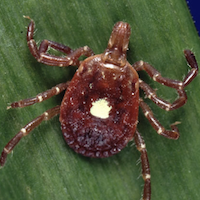Small mammal assemblages and their ectoparasite prevalence (Acarina) in mangrove forests of Peninsular Malaysia

Accepted: 30 July 2021
HTML: 38
All claims expressed in this article are solely those of the authors and do not necessarily represent those of their affiliated organizations, or those of the publisher, the editors and the reviewers. Any product that may be evaluated in this article or claim that may be made by its manufacturer is not guaranteed or endorsed by the publisher.
The mangrove forest is located in the coastal intertidal zone and plays a vital role in buffering against erosion from storm surges, currents, waves, and tides. This ecosystem also serves for ecotourism due to its heterogeneous habitats, which supported a high diversity of plants and animals. Small mammals are among the abundant but poorly recognised inhabitants in mangrove forests. Apart from their role as primary consumer and prey, they are host to various ectoparasites, which potentially become the primary vector for tick-borne diseases among visitors. Therefore, this study aims to determine the small mammal assemblages and their ectoparasite prevalence in mangroves forests of Peninsular Malaysia. The capture-release method was applied for small mammal sampling, and each captured individual was screened and collected for ectoparasites before released. DNA barcoding using CO1 genes was performed for small mammal species verification, whereby ectoparasite identification was based on morphological identification and molecular verification using 16S rDNA genes. A total of 94 small mammals from 6 species were captured across sites, dominated by Rattus tiomanicus (n=74). From this number, 15 individuals (16% prevalence) were infested by ticks, 22 individuals (23%) were infested by mites, whereas 4 individuals (4%) were infested by both ticks and mites. Five species of ticks and one mite species were identified; Amblyomma cordiferum, Ixodes granulatus, Haemaphysalis hystricis, Dermacentor auratus, Dermacentor atrosignatus, and Laelaps echidninus. This study reveals a relatively poor diversity of small mammals in the mangroves forest, of which highly infested with a diversity of ectoparasites, elucidating the relationship of hostectoparasite associations in the riparian zone. This information is crucial to inform visitors to these areas, ultimately safeguard against ectoparasite-borne disease.
Supporting Agencies
Tenaga Nasional BerhadPAGEPress has chosen to apply the Creative Commons Attribution NonCommercial 4.0 International License (CC BY-NC 4.0) to all manuscripts to be published.


 https://doi.org/10.4081/tz.2021.78
https://doi.org/10.4081/tz.2021.78



